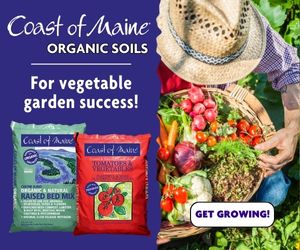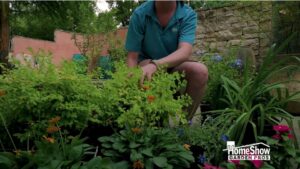Houston Organic Garden Tips & Advice
12 Essentials for a Thoughtful Bird Feeding Station
Transcript:
Rich Edie:
Hi. I am Rich Edie with Wild Birds Unlimited on Memorial Drive and in Cyprus. We’re here today to talk about the 12 elements of a thoughtful bird feeding station. These were developed to help all of the backyard bird feeders out there create a habitat that’ll attract a much wider variety of birds. We’re going to walk through each one of these elements.
The number one element is coming up is to decide on what your foundational feeder is going to be. You might be asking, what is a foundational feeder? Well, that foundational feeder is the feeder that you’re going to have in your yard, 365 days a year. It will be a high capacity feeder where it’ll hold at least three to five days worth of food, and it’s the type of feeder that will keep your seed good and dry.
From a foundational feeder, we would move to a tray feeder. Now, you would say why a tray feeder? A tray feeder is considered the community feeder of the backyard bird feeding world. You can put all kinds of bird seed, bird food. Here we’ve got a bag of Bluebird Bugberry Blend that will go in there, which is bark butter bits, mealworms and some fruit. You’ll see multiple variety of birds on a tray feeder at any given time. You could easily see cardinals, chickadees, woodpeckers, all in the tray feeder at the same time, and you’ll get the benefit of seeing how those birds interact with each other.
From there, if you’ve got the foundational feeder and a tray feeder, we always recommend then moving to a fat or suet feeder. This not only provides a high level of fat and protein for the birds, but it also provides a vertical landing spot for our woodpeckers. This happens to be a tailprop feeder, which the Tailprop provides a natural resting position for downy woodpeckers, red-bellied woodpeckers, which are very common in our area.
Once you’ve got that down, then we can move to a convenience feeder. And this is just a simple tray feeder. And in this case, you can see that this tray just comes out very simply. Now it’s locked on, so I won’t take it off, but this is a great way. If you’ve got eastern bluebirds in your yard, you could use dried mealworms and fill that tray up. That makes a great spot for another wide variety of birds. Cardinals actually prefer to eat out of tray feeders, so you’ll easily see cardinals in a feeder like this or on your tray feeder and certainly your foundational feeder.
Now, the other thing that we want to add to our 12 elements is landing perches. This is a branch perch that easily attaches to the bowl with our easy attached connection. Why is the landing perch important? Well, if you pay close attention to the birds that are coming to your feeders in the backyard, they will invariably land someplace first. They’ll look around to see it’s safe, and then they’ll jump to the feeder of their choice. So providing a landing perch for them gives them the ability to feel safer as they begin to jump to the feeder that they choose.
Now, we also talk about being seasonally savvy in the store all the time. And what does that mean? Well, that means that different birds come through our area at different times of the year. This happens to be a nectar feeder, which is another key element to a bird feeding station. But as you probably know, hummingbirds come through our area March through May on their spring migration north. But our biggest months that we enjoy hummingbirds is August, September and October. So September is the biggest feeding month. So while you don’t have a nectar feeder out year-round, there are times of the year being seasonally savvy that you’ll have that nectar feeder out.
The other thing that we strongly encourage if you’re trying to attract as much wildlife to your backyard is a water source. This happens to be a very simple stand bird bath. This one has a plastic dish on it. You can go more ornamental like this granite bird bath, lower to the ground. This one would be attractive if you’re wanting to get other wildlife to your backyard like opossums, or maybe you don’t like raccoons, but some people do. So water source in your backyard is really important. As a matter of fact, if you only have a feeder in your backyard and you don’t have a water source, we would strongly encourage you to get that water source added to your yard. It could be bird baths. It could be koi ponds. It could be bubblers fountains, whatever. We have a saying here that not all birds eat out of feeders, but all birds need water. So having that water source in your backyard is really important.
The other question that you may have, well, I have a lot of squirrels. Well, that’s what the 12th element is, which is a squirrel baffle. This one happens to be a squirrel. We also have raccoon baffles to keep the raccoons off. Baffles are very effective. If you can maintain your feeder station 10 feet away from a launch point for a squirrel, they won’t be able to jump to it. So at that point, the baffle will keep them from crawling up the pole, and it’s far enough away that they can’t jump to it. We also have hot pepper bird foods that we can talk about later, which is another critter solution that would be included in this as well.
Then finally, the one question that probably get asked the most is, where’s the best place to put my bird feeding station? Well, my answer to that is in a place where you’ll be able to enjoy the birds from the place of your choice. It could be off of your patio, outside a kitchen window. Put it in a place where you’re going to be able to enjoy the birds. Most importantly though, is if you’re going to put it outside of a window, make sure that the feeder station is at least 10 feet away from the window. That way, if the birds get spooked off of the feeder, then you don’t want them to collide into your windows.
These are the 12 elements. All of these are very effective in our area. All of these feeders and all of these solutions will attract a very large variety of birds, your cardinals, chickadees, titmice, woodpeckers, and hummingbirds. When we have them here in the fall.



